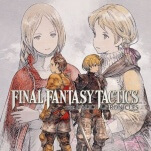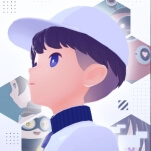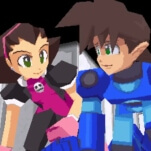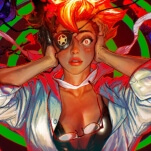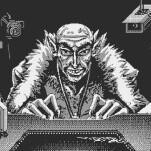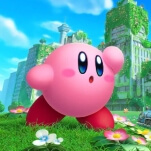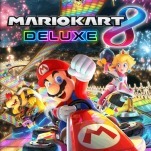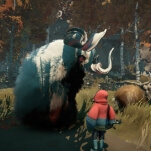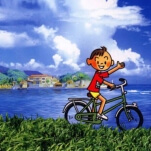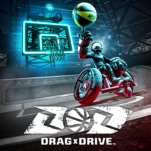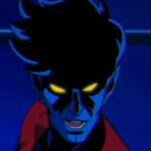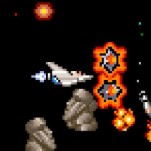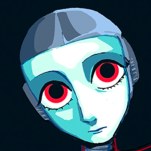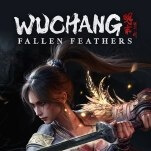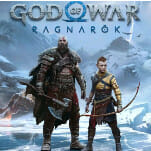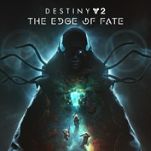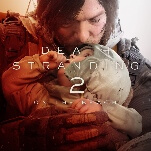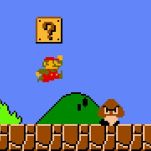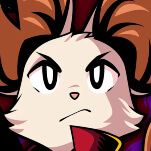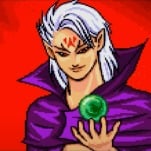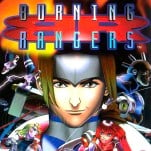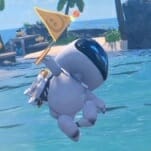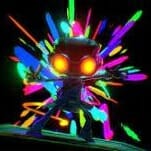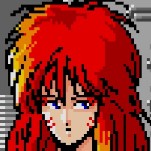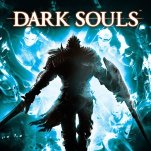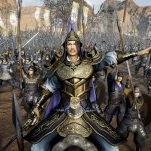Every Ys Game, Ranked
We rank every game in the pioneering action RPG series

Ys debuted in 1987, and is one of the pillars of Nihon Falcom and action role-playing games. Ever since Falcom committed to making sure they all receive international releases, they’ve been a consistently reliable source of great action and even better music to swing a sword to.
The latest release, Ys X: Nordics, which was released worldwide outside of Japan today, is the 10th numbered entry in the series for the red-haired adventurer, Adol Christin, but the series’ history is not as simple as that. There are remakes, multiple versions of the same game that aren’t actually the same game, and, of course, a prequel. So let’s pit them all against each other with rankings.
Notes: Ys vs. Trails in the Sky: Alternative Saga is absent as a crossover arena fighting game that splits the bill with Falcom’s other pillar, but it is fun if you’re the kind of person who’s into unofficial translations and the deep lore. And we’ll skip Taito’s Playstation 2 Ys remakes, as they were Japan-only and haven’t been unofficially translated.
Now, let’s Ys.
13. Ys Strategy
System: Nintendo DS
Year: 2006
Availability: N/A
I’d love to say that there’s never been a bad Ys game. That there have only been some iffy ports, or Ys titles that aren’t as good as other Ys titles. We’ll just have to roll with, “There’s never been a bad Falcom-developed Ys game,” because Ys Strategy—developed by Future Creates—is not good.
It could have been good! It’s almost good. It’s a real-time strategy game that plays an awful lot like Warcraft, if Warcraft were interminably slow in a way that makes it end up last on a list of series rankings. Someone, please, mod Ys Strategy so that it plays faster, and then “there’s never been a bad Ys game” can be true again.
12. Ys IV: Mask of the Sun
System: Super Famicom
Year: 1993
Availability: N/A
The first three Ys games were developed by Falcom. Specifically, a team within the studio led by Masaya Hashimoto and Tomoyoshi Miyazaki. When those two departed the studio to found Quintet—developers of fine games like Illusion of Gaia—Ys was put on hold. Hudson Soft would come calling, asking for another Ys for the PC Engine Super CD-ROM² after porting over the first three, but Falcom didn’t have the bandwidth to make one. Instead, they wrote a story outline, created new characters, composed a soundtrack, and handed the rest off. Where does Mask of the Sun come in? Tonkin House, who had developed the Super Famicom port of Ys III, was assigned the task of making a version of Ys IV for the SFC. The result? Two games that came from the same starting point, but ended up notably different in terms of narrative, gameplay, graphics, and quality.
Mask of the Sun is fine, until you play another Ys. It’s the weakest mainline entry, owing mostly to Tonkin House’s own decisions. The experience balance is off, causing it to be a grindfest—it’s unavoidable, too, as you need money for new gear, and also every bit of stat-boosting you can get in order to take on bosses that can practically insta kill you if they hit you with magic. The collision detection isn’t as poor as in Tonkin House’s version of Ys III, but it’s still not ideal, with you getting killed in a hurry even against enemies you’re stronger than if you’re not lined up just right. The soundtrack is great, but suffers in comparison to Hudson’s effort with the same compositions, and it’s nothing special to look at in 1993 on the SFC… it’s a series of not-quite-good-enough decisions and results.
Still! It’s worth checking out the unofficial translation if you’re invested in seeing how Ys has changed over the years, but go into this knowing it’s the worst of the bump combat titles, and it isn’t close.
11. Ys III: Wanderers from Ys
System: PC-88/98, MSX2, X68000, Genesis, Turbografx CD, Famicom, SNES
Year: 1989
Availability: N/A
Best version: Turbografx CD
Wanderers from Ys was controversial in ‘89, as it ditched the bump combat of the original games for side-scrolling sword-swinging. It wasn’t the most refined combat out there, and the dungeons and labyrinths weren’t particularly challenging or labyrinthian, but it was a solid game you could blow through in an afternoon if you were feeling it. And the game flowed well enough for that to happen.
Most of the ports are decent enough, though, the collision detection is rough in the SNES version—that sword was already a hair short. The Turbografx CD edition looks and plays better, however, and the soundtrack, which would sound great played on just about anything, is in fantastic form thanks to the console’s Red Book audio. There are some sloppy localization issues that were odd for Hudson Soft, but other than that, this is the ideal version of the game.
10. Ys V: Lost Kefin, Kingdom of Sand
System: Super Famicom
Year: 1995
Availability: N/A
Falcom made Ys V: Lost Kefin, Kingdom of Sand themselves, and for Nintendo’s 16-bit system instead of for personal computers, as had been their way with the first three Ys titles. The results were… mixed. Lost Kefin is a bridge game, with Falcom once again moving Ys away from the bump system, but retaining the top-down nature of those titles. There’s melee combat and a more involved magic system that mixes in elements from a couple of other Falcom games, Xanadu and Sorcerian, as it has its own separate experience and levels, and lets you build spells via alchemy. Neither feels great: the melee combat isn’t as snappy as you’d expect from Ys, and the magic system feels half-baked. The game often comes off lacking an identity, in its gameplay as well as its visuals, which lost the Ys signifiers the Tonkin House ports held onto: Ys V looks a lot like Generic Super Famicom RPG, down to the Square-looking menus and text.
It was also a little too easy, to the point that Falcom released an updated edition of the game, Ys V Expert, which tried to address this. Ys V is still a good time despite these issues, which is promising news for when Falcom eventually gets around to remaking it: the foundation for a great game is here, they’ve just got to make it.
9. Ys VI: The Ark of Napishtim
System: Playstation Portable, Playstation 2, Windows
Year: 2003
Availability: Windows
Best version: Windows
Just one space separates Ys V from its sequel in the rankings, but there’s a small chasm between the two. Ys VI: The Ark of Napishtim, after an eight-year break between games, gets the transition away from bump combat right, once again making Ys feel snappy and fast-paced in a way that’s always compelling you forward to the next battle and destination. The gameplay and engine used in Ys VI were also the basis for two other Ys titles, Origin and Oath in Felghana. Those are superior games, and that there are better versions of this kind of game you can play is Ark of Napishtim’s greatest sin.
You’ve got elemental swords, which, along with a charging special attack bar, are the replacement for magic and alchemy. It all fits so well together, and feels great, as you mix in these special elemental attacks in between your more standard ones, all while jumping and running around the screen. It’s mediocre for a Ys, sure, but “mediocre for Ys” is pretty good for everyone else.
8. Ys Seven
System: Playstation Portable, Windows
Year: 2010
Availability: Windows
Ys Seven has two glaring issues. The first is that there’s a lot of backtracking. Just so much backtracking. The second is that they named it “Ys Seven” instead of “Ys VII,” which… sure, “Ys 7” would have looked weird, but Seven? George Costanza-ass naming convention.
Luckily, everything else here works. The soundtrack is a little below Ys’ standards, but an in-game apology was issued for that in the form of “Legend of the Five Great Dragons,” which goes as hard as pretty much anything Falcom Sound Team has ever composed. This is the first game with the team-based combat system, where Adol was joined by longtime allies like Dogi the Wall-Crusher (a very literal nickname), former adversaries, and new friends/frenemies, with you able to swap between them. Elemental swords are no more, with there being various attack types, depending on the kind of weapon a given character wields. So you’re constantly swapping to exploit enemy weaknesses, which keeps everything moving.
7. Ys IX: Monstrum Nox
System: Windows, Playstation 4, Playstation 5, Nintendo Switch, Stadia
Year: 2019
Availability: Windows, Playstation 4, Playstation 5, Nintendo Switch
Ys IX does some fascinating things with platforming and player movement: whereas Seven had abandoned everything besides running around on solid ground, Ys IX has you using the powers of monsters to fly all over the place, scaling buildings and running around on rooftops, no longer tethered to the ground. All of this stuff is, to use a professional phrase, sick as hell. And the combat feels great, too, with the party-based setup still getting the job done in its fourth appearance.
However! Ys IX gets dinged a little bit for not being quite as open and free and full of non-vertical exploration, with much of the game taking place within the confines of a city that Adol and his companions can’t leave, for narrative reasons. The gliding and the scaling and the running up walls is great and all, but there were moments where I missed the big open fields. You get to them, eventually, but it takes Ys IX and its conversation/tutorial-heavy opening hours a little while to get going, compared to its predecessors. It’s a great game, these lists are just all about picking nits.
6. Ys Origin
System: Windows, Playstation 4, Playstation Vita, Xbox One, Nintendo Switch
Year: 2006
Availability: Windows, Playstation 4, Playstation Vita, Xbox One, Nintendo Switch
Ys Origin is a prequel set centuries before Adol’s first journey, and stands as the only mainline game in the series where you don’t play as him. It’s a prequel meant for people who have already played the first two Ys games, as it takes place entirely within the ancient tower that features in the climax of the original.
You can play through Ys Origin as one of three different characters, and it’s going to be a different experience each time given their weapons. Yunica wields an axe, so she’s the closest to Adol you’ll get in terms of gameplay. There’s a ranged option, a sorcerer named Hugo Fact—whose last name you’ll recognize if you’ve played the original Ys titles. Complete the game with those two, and you unlock Toal Fact, who is presented as an antagonist during the playthroughs of the others, but there’s more going on there. Toal attacks from an exceptionally close range, but does so with lightning speed: he’s pretty much the game’s hard mode.
Ys Origin is a straightforward dungeon crawler, and it does an excellent job of that. The bosses are huge and challenging, and there are secrets to unearth if you explore for them. It’s also all good enough that you won’t mind playing through it three times—a single run will take you about eight hours or so, and each story is personalized and shows off differing perspectives of the central tale.
5. Ys IV: The Dawn of Ys
System: PC Engine Super CD-ROM²
Year: 1993
Availability: N/A
Depending on how bothered you are by the game’s final third, which ramps up the maze-navigating difficulty and goes on maybe a little too long, Hudson Soft’s take on Ys IV might be the best of the bump combat titles. Hudson, with frequent partner Alfa System working as developer, advanced the gameplay of the original two Ys games by adding in diagonal movement, combining the magic systems of Ys II and Ys III together into something new, and the balance of everything—experience, enemy difficulty, how effective your defense is when you come at an enemy head-on instead of off-center—all feels right here, as well. Which makes sense: Alfa System and Hudson had paired together previously for excellent ports of both Ys I & II, as well as Ys III.
Throw in the weird and inventive items like the Samson Shoes—which make Adol incredibly slow and vulnerable but let him kill enemies in a single hit, perfect for leveling up without it feeling like a grind—and the dedication to having this serve as the clear send off for the series as far as the PC Engine was concerned, and you end up with one of the finest games in the franchise. Which, because of the liberties Hudson took, wasn’t the canon version of Ys IV, with that falling to the inferior Mask of the Sun.
Like with that game, you’ll need to play an unofficial translation of The Dawn of Ys if you want to experience it in English.
4. Ys: Memories of Celceta
System: Playstation Vita, Playstation 4, Windows
Year: 2012
Availability: Playstation Vita, Playstation 4, Windows
Memories of Celceta is a hybrid in a number of ways, as it’s a combination of Mask of the Sun and The Dawn of Ys with its own narrative twists, utilizing the gameplay style and engine of Ys Seven. The design of it all is an improvement on Ys Seven, the soundtrack is one of the best in a franchise, and, while no points are awarded for this in the rankings, Memories of Celceta is actually available to play on platforms you have access to.
While the original Ys IV entries were solo Adol adventures, Memories of Celceta partners you up with some of the combat-ready NPCs from those titles, while also introducing new allies, for more party-based action combat. The overall narrative and more personal storytelling elements and motivations for protagonists and antagonists from the games are fleshed out here, and the invading Romun empire—not a typo—gets more play than they did in either of those entries, as well, which makes sense given their larger importance in post-IV entries. It rocks.
3. Ys I & II
System: Turbografx CD, Windows, Playstation 2, Nintendo DS, Playstation Portable, X68000
Year: 1989
Availability: Windows
Best version: Turbografx CD or Windows (Ys I & II Chronicles)
Ys I: Ancient Ys Vanished and Ys II: Ancient Ys Vanished — The Final Chapter were originally two separate games, with the first having a cliffhanger ending. Adol Christin defeated the evil at the top of the tower, but was then transported to the land of Ys, which happened to be floating above the continent of Esteria, for the second game. Getting back down without Ys crashing below and killing everyone was your new goal. From Hudson’s port of the two games onward, Ys I and Ys II were a package deal.
These bump combat classics have been remade multiple times—on Turbografx CD with updated graphics and an arranged soundtrack, multiple PC editions, and a DS version, too—and while they’re all great because they’re all Ys I & II, the Turbografx CD version as well as the last of the Windows editions—Ys I & II Chronicles—are the standouts. Hudson’s take is just different enough to be worth checking out, while Chronicles is the definitive edition, with the most guitar-forward, thrash-metal soundtrack going for a game featuring sprites. Yuzo Koshiro’s original PC-88 compositions still whip, but having them played on a guitar that sounds like it’s on fire rules.
If you’ve never played Ys I & II, the good news is that you’ve got a solvable problem.
2. Ys VIII: Lacrimosa of Dana
System: Playstation Vita, Playstation 4, Windows, Nintendo Switch, Stadia, PlayStation 5
Year: 2016
Availability: Playstation Vita, Playstation 4, Windows, Nintendo Switch, PlayStation 5
Ys VIII seemed unfinished at first, and its original localization was lacking to the point of corporate apology. Through patches and re-releases, Falcom and international publisher NIS America tweaked it until it became one of the greatest games in the franchise. Not only do you use the party system and get to utilize some new and wonderful allies besides Adol, but you also end up playing in different timelines, controlling the titular Dana in the other.
VIII, after some scene-setting on a passenger ship, opens with a fight against a massive kraken and a return to the ass-kicking thrash of Ys’ youth. You end up stranded on an island, finding the lost passengers one at a time, and then, in between exploring coastlines and caves, defending your temporary dwelling in something of a tower defense mode where Adol gets to slay massive invading beasts. It’s a gorgeous game with an excellent soundtrack and the combat to match; don’t let its early, imperfect editions let you think otherwise.
1. Ys: The Oath in Felghana
System: Windows, Playstation Portable, Playstation 4, Playstation 5, Nintendo Switch
Year: 2005
Availability: Windows, Playstation 4 (2025), Playstation 5 (2025), Nintendo Switch (2025)
If Ys VIII has one flaw, it’s that it takes 40 hours to complete—an eternity for Ys. Those dozens of hours are great and all, but The Oath in Felghana is going to take you less than 12 to see all there is to see. It’s fantastically paced, and the combat used in Ys VI has been refined and placed inside of a game with superior overall design. While as of this writing it’s only available on Windows, the upcoming Ys Memoire: Oath in Felghana release will put an updated version of this game on multiple home consoles, as well.
Oath in Felghana is a remake of Ys III: Wanderers from Ys, and it’s tremendous from start to finish. The dungeons that were too short and straightforward before have been given a level or levels of depth, both figuratively and literally, that make them standouts. The soundtrack—wonderful even by Ys standards—has been lovingly arranged here in a vastly different style that pushes you ever-forward. The story and characters have been given more attention, the localization is on point this time, and it’s just so much fun to play.
If you want something bigger, then Ys VIII is right there. Something even more old-school, then snag Ys Chronicles. In a vacuum, though, The Oath in Felghana is the best that Ys has ever been.
Marc Normandin covers retro videogames at Retro XP, which you can read for free but support through his Patreon, and can be found on Twitter at @Marc_Normandin.
-

-

-

-

-

-

-

-

-

-

-

-

-

-

-

-

-

-

-

-

-

-

-

-

-

-

-

-

-

-

-

-

-

-

-

-

-

-

-

-



